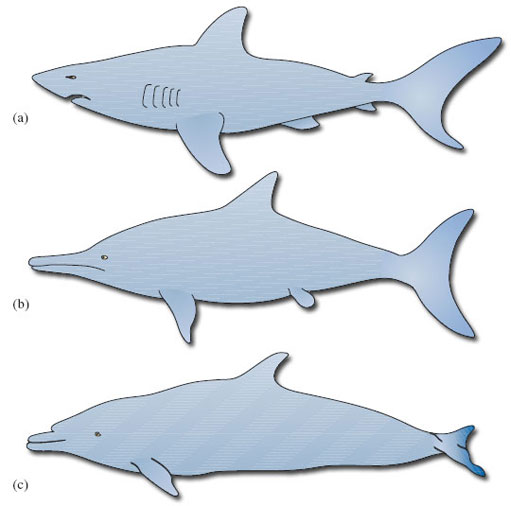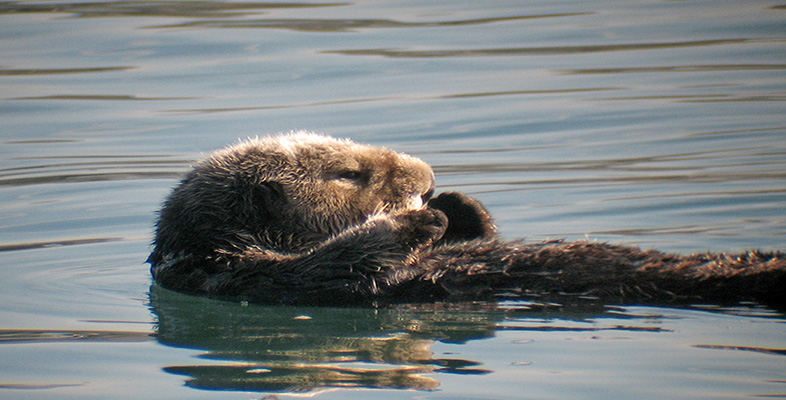2.3 Moving about
Water is more viscous than air, so it can take more effort to move through water (try running in a swimming pool). Friction between the body and the water causes turbulence, which holds a swimmer back, and the faster the swimmer tries to move, the greater the turbulence. One way of avoiding the problem is to leave the water for short periods and travel through air, and some of the smaller pinnipeds and cetaceans resort to 'porpoising', leaping from the water for short periods when they need to move as quickly as possible. But to catch their food, these animals have to be swift and agile in the water.
Pinnipeds breed on land (or ice) so they have to be able to move about on land as well. They have four flippers arranged in the typical mammalian limb pattern: two at the front and two at the back. In true seals, the hind flippers project behind the body and provide extra propulsion in association with a sideways swimming motion [p. 188]. The shorter front flippers are used for steering in the water and for pulling the body along on land. Fur seals and sea-lions use longer front flippers to 'fly' through the water; the hind flippers are mainly for steering and most of the power comes from the body muscles and spine. On land, however, the hind flippers can be brought forward beneath the body, allowing the animal to lift itself up and 'walk'.
As you know from LoM, sirenians and cetaceans are fully aquatic and never leave the water. They swim in a rather different manner, using an up and down motion of a tail with horizontal flukes. The front fins help with steering and keep the animal stable in the water. This vertical swimming motion is another legacy of the animals' terrestrial ancestry: imagine how the spine of a sprinting cheetah (or a galloping horse) flexes to allow the animal to increase its stride length.
The muscles of aquatic mammals are no stronger per unit mass than the muscles of terrestrial mammals, so a dolphin's top swimming speed of around 50 km h−1 is not the result of muscle strength alone. As DA explains, most aquatic mammals are streamlined to some extent to help them slip through the water: a smooth, cigar-shaped body with few external projections reduces water resistance and the drag created by turbulence. Streamlining is so important for aquatic animals that many fish, aquatic reptiles such as the ichthyosaur, and aquatic mammals share a common body shape - another example of convergent evolution (see Figure 1). The streamlining of cetaceans is made even more effective by a special property of their skin. The outer layer is soft and spongy, and reduces turbulence at the skin-water interface by expanding and contracting in response to the flow of water.

These adaptations are so effective that it is now believed that cetacean swimming is pretty near as cost-effective (in terms of metabolic energy expended for distance travelled) as the running of land animals. Swimming at the surface is more expensive, however, as is the swimming of semi-aquatic mammals such as otters. It appears that economic running and swimming are difficult to combine in the same animal.
